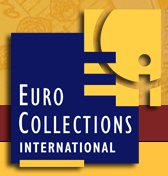
Austria 2010 50€ The Crown Of St Stephen Gold Proof
Stephen (969/975 – 1038) was the first Christian King of Hungary. He was responsible for converting the kingdom to Christianity, sometimes even through force. Around the year 1000 his ambassadors approached Pope Sylvester II in Rome for the papal blessing and a crown for Stephen’s pending coronation on January 1, 1001. The pope acquiesced, sending Stephen a crown and the title of “apostolic majesty” since his kingship had been confirmed by the Apostolic See.
It is fairly certain that nothing remains of this original papal crown. The present well-known crown has been put together from two parts. The lower circular crown (the “Greek crown”) was a gift from the Byzantine emperor, Michael Ducas VII (1071-1078), to King Geza I of Hungary (1074-1077). Both monarchs are depicted in the enamel panels that decorate the coronet. The so-called “Latin crown” is formed by the two intersecting arches of the present crown. They too are decorated with enamel panels depicting Christ and the apostles. The fact that four of the twelve apostles are missing is a clear indication that the arches were shortened to fit the crown. They may have been part of a book of the gospels given to St. Stephen, perhaps by the western emperor, Otto III.
For Hungary the crown is a mystical relic, a source of legitimacy. Possession of the crown confers an aura of legality on the government. The king could not be crowned with any other crown. (In 1741 Maria Theresa was crowned with St. Stephen’s crown as “King” despite her sex.) During the revolution of 1848/49 the crown was buried to prevent it falling into the hands of the Austrian emperor. It was later recovered and Franz Joseph was crowned with it in 1867 in Budapest. The last Hungarian coronation was that of the Emperor Karl in December 1916.
At the end of World War II the Hungarian crown was carefully carried westward and hidden in Austria to prevent it falling into the hands of the communists. For sometime thereafter it was held in Wiesbaden Germany, in the American sector and later transferred to the vaults of Fort Knox. It was not taken as a spoil of war but rather for safekeeping. America always intended to return the crown to Hungary. President Jimmy Carter decided to return it to the people of Hungary in 1978. Today it is displayed in state in the parliament building in Budapest, with its own guard of honour.
The reverse shows Empress Maria Theresa on horseback following her coronation as “King” in 1741 in Bratislava. The king (or in this case the Empress) was required to ride up the Royal Hill in full coronation regalia and at the top swing the sword to all four points of the compass, pledging to defend the borders of the Kingdom of St. Stephen. In the background is the castle of Bratislava located on the banks of the Danube River.
The new gold coin with a face value of 100 Euro portrays the Holy Crown of St. Stephen on the obverse side. The crown detail displays some of the nineteen enamelled panels, which decorate the crown along with some semi precious stones and pearls. Also noted in the left half of the coin design are the four pendants that hang from the crown. The coin depicts the crown resting on a piece of silk fabric draped over an ornate stand. Also located on this side of the coin is the country of issue “Republik Oesterreich” Republic of Austria, and the face value of 100 euros. Inside the lower right portion of the rim is the word “Stephanskrone”, St. Stephan’s crown.
| The new 100 Euro gold coin designed by the Mint’s chief engraver Thomas Pesendorfer is struck in proof quality (reverse frosting) with a maximum mintage of 30,000 pieces. The coin has a diameter of 30 mm., contains 16 grams of gold and is .986 fine. Each coin is encapsulated and comes in a box with a numbered certificate of authenticity. A unique lapel pin plated with gold and bearing a miniature version of the Crown of St. Stephen’s also accompanies the gold coin. |  |
The Crowns Of The Habsburg Empire Collection Case is also available separately.





No comments:
Post a Comment